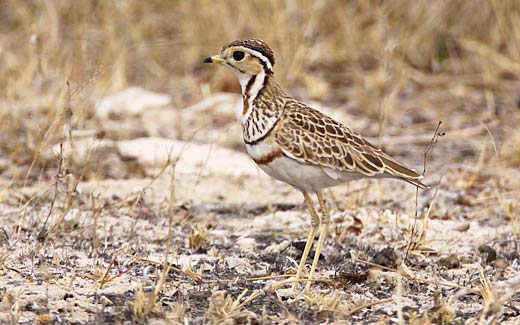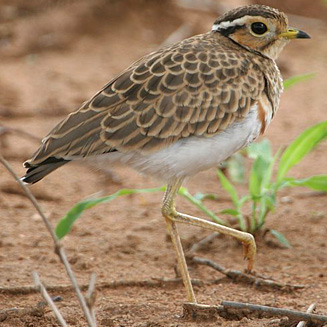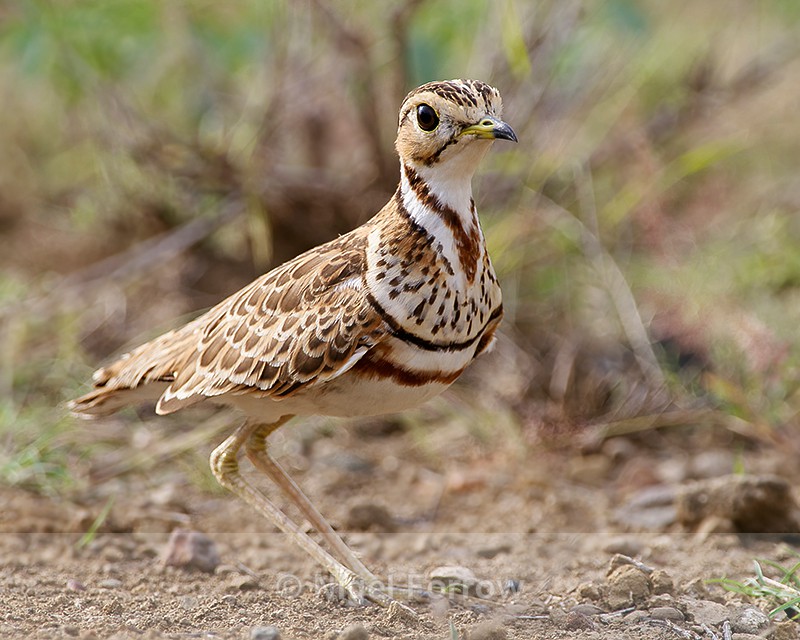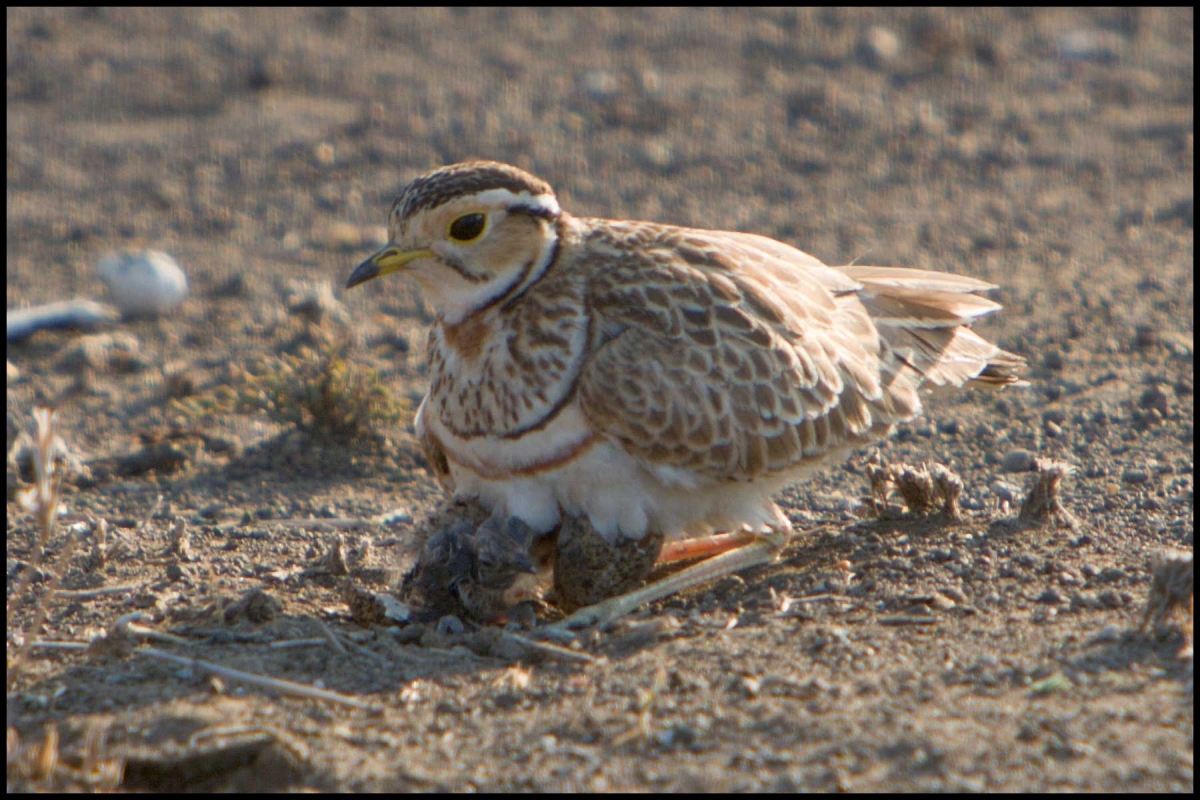
Rhinoptilus cinctus
SUBFAMILY
Cursoriinae
TAXONOMY
Hemerodromus cinctus Heuglin, 1863, near Gondokoro, White
Nile. Three subspecies.
OTHER COMMON NAMES
English: Heuglin’s courser, Seebohm’s courser; French:
Courvite б triple collier; German: Bindenrennvogel; Spanish:
Corredor Escamoso Grande.
PHYSICAL CHARACTERISTICS
9.8–11 in (25–28 cm); 4.2–5.3 oz (119–150 g). Two or three
rather poorly defined subspecies are recognized.
DISTRIBUTION
Eastern Africa from extreme northern South Africa and
Namibia to southern Sudan and Ethiopia.
HABITAT
Dry thorn scrub, bushy grassland, and sparse mopane woodland.
BEHAVIOR
Usually singly or in pairs, less often in groups of up to six
birds. Largely nocturnal. When disturbed may freeze before
running swiftly away, then taking flight for a short distance.
Roosts by day in shade of bush or tree.
FEEDING ECOLOGY AND DIET
Catches insects on the ground. Little else known.
REPRODUCTIVE BIOLOGY
Nests mainly in dry season, making a deep scrape under a bush
or tree. Clutch of two eggs partly buried in loose soil and incubated
by both parents for about 25–27 days. Chicks are
highly precocial, but the fledging period is unknown.
CONSERVATION STATUS
The species is quite common over most of its range and is not
threatened.
SIGNIFICANCE TO HUMANS
None known.
Other popular Animals
Photo Gallery of - Three-banded courser




 Animalia Life
Animalia Life